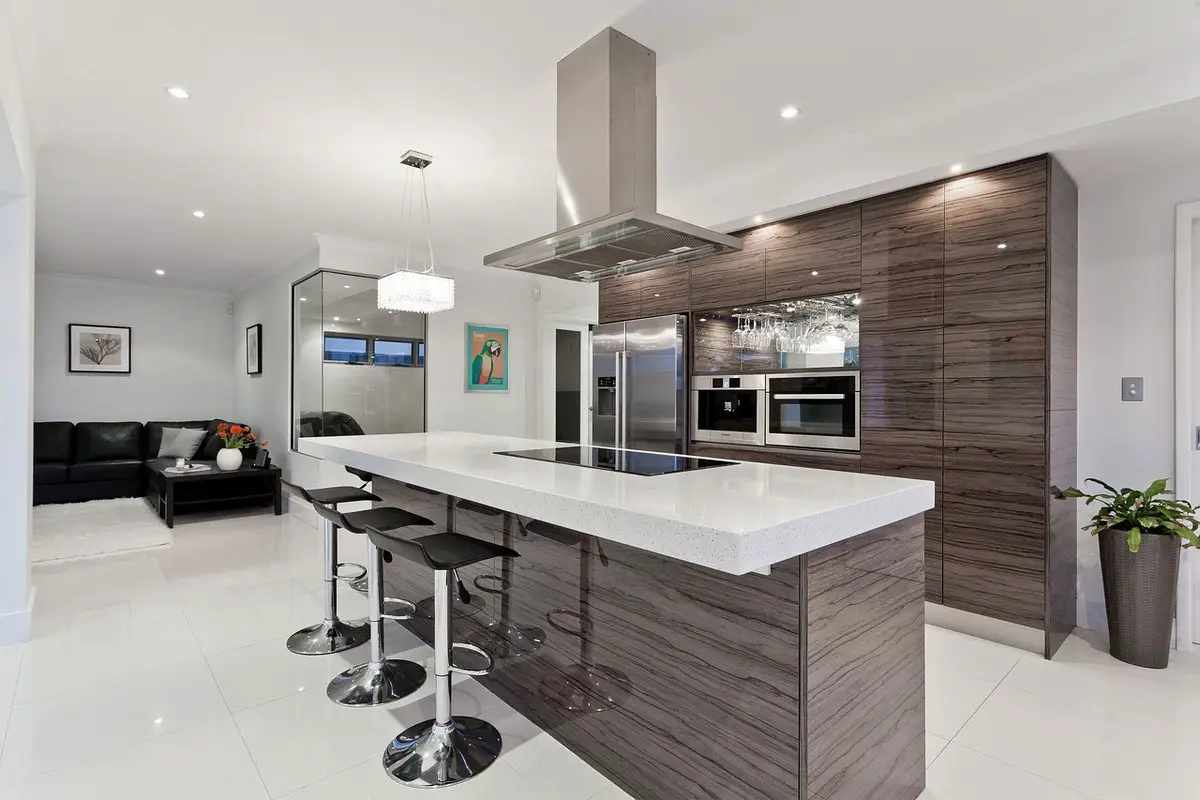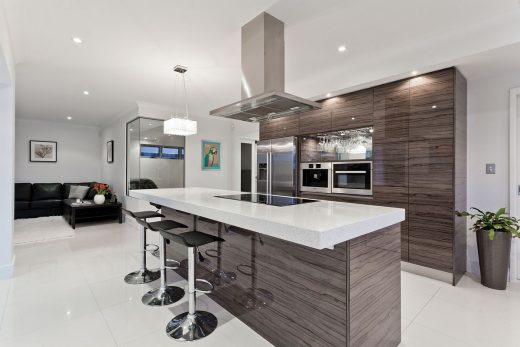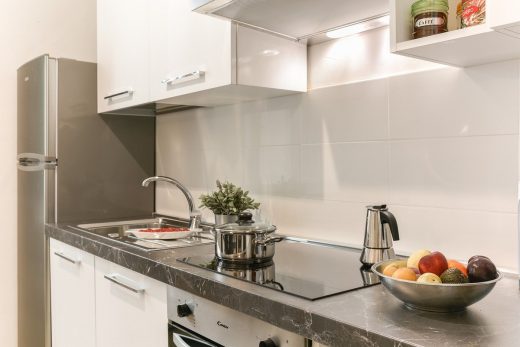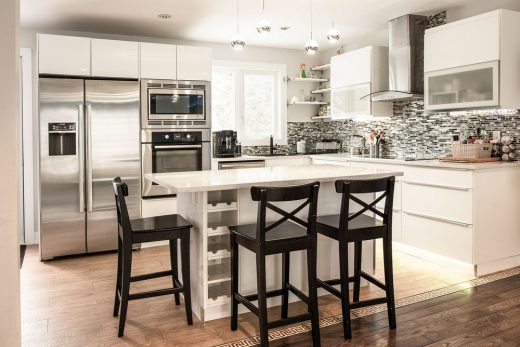Designing and planning your perfect kitchen guide, House cooking space style, Property dining area
Designing and Planning Your Perfect Kitchen Advice
7 June 2024
Cooking Up a Storm: Designing and Planning Your Perfect Kitchen
Designing the perfect kitchen is much more than choosing the right paint color or cabinet style. It’s about creating a space that fits seamlessly into your lifestyle, whether you’re a seasoned chef or a busy parent.
The kitchen is often the heart of the home, where meals become memories and functionality meets comfort. From picking the ideal layout to selecting appliances that cater to your culinary needs, every decision plays an integral role in how you enjoy and use your space. In this blog, we will explore essential tips and innovative ideas to help you plan and design a kitchen that not only looks great but also enriches your cooking experience.
Laying the Foundation – Space Planning and Layout
Designing your dream kitchen starts with understanding the available space and selecting the optimal layout to suit your home’s dimensions. Popular choices like U-shaped, L-shaped, and galley kitchens cater to various space constraints and cooking needs; a U-shaped kitchen maximizes countertop and storage, an L-shaped layout makes use of corners and integrates dining areas well, while a galley kitchen is perfect for efficient use of narrow spaces.
The layout should incorporate the work triangle principle, arranging the refrigerator, stove, and sink to streamline meal preparation and minimize movement—ideally keeping the distance between these points neither too short nor too long to avoid kitchen traffic and boost safety.
Choosing the Right Appliances & Features
Selecting Appliances: Choosing the right appliances is incredibly important for a kitchen that is not only beautiful but also highly functional. Opt for appliances that suit your cooking needs and frequency. For example, a high-quality stove is essential for someone who cooks often and enjoys gourmet meal preparation. Moreover, adequate ventilation is essential in any kitchen to control odors, smoke, and humidity during cooking. For effective air management, you might want to install the widely favored Artisan AT1 range hood. This particular model combines style and functionality, effectively removing airborne contaminants and ensuring that the kitchen remains a comfortable space for cooking and socializing. Its powerful extraction capabilities prevent grease and odors from lingering, making it an essential feature in modern kitchen design.
Similarly, a large and organized refrigerator is ideal for families who need to store substantial amounts of food. Consider energy efficiency ratings to ensure your appliances help save on electricity bills and reduce your environmental footprint.
High-Tech Upgrades: Incorporating technology in the kitchen adds to both its functionality and modern appeal. High-tech appliances, such as smart refrigerators that can keep track of your groceries and expiration dates or ovens that can be controlled remotely via smartphone, are becoming increasingly popular. These devices not only add convenience to your cooking routines but also help in managing your kitchen more effectively.
Safety features: Many modern appliances come with child safety locks and automatic shut-off functions, which are important for households with young children or for those who want added peace of mind. These features not only contribute to the safety of your kitchen but also help prevent accidents, making them an indispensable part of any kitchen appliance purchase. By incorporating these safety features, you ensure that your kitchen remains a secure and stress-free environment for everyone in your home. Also consider installing anti-tip brackets to securely anchor the appliance to the floor or wall, providing stability and preventing potentially dangerous accidents.
Aesthetics and Style
Designing with Style: Creating a visually appealing kitchen involves more than just selecting the right appliances. It’s about choosing a design theme that resonates with your personal taste. Whether you prefer a sleek modern look, a cozy traditional style, or a rustic farmhouse aesthetic, the design should reflect your personality and blend seamlessly with the rest of your home. Consider elements like cabinetry, backsplashes, and countertop materials that not only look great but are also durable and easy to maintain.
Color Schemes and Materials: Neutral tones like whites and grays offer a clean and timeless look, while bold colors can add drama and personality. Materials like granite, quartz, and marble for countertops provide durability and beauty, though each comes with different maintenance needs. For flooring, options such as ceramic tile, hardwood, and laminate offer various aesthetic and functional benefits, allowing you to customize your kitchen’s look and feel.
Lighting and Ambiance: Combine general, task, and accent lighting to achieve a balanced look. Overhead lighting provides overall illumination, under-cabinet lights help with meal preparation, and pendant lighting can add a touch of elegance to the dining area. Smart lighting systems that allow you to adjust the brightness and color based on the time of day or your mood can also enhance the atmosphere for entertaining or cooking.
Practical Considerations – Budgeting and Contractors
Setting a Budget: Renovating a kitchen can be a significant investment, so it’s important to set a realistic budget early in the planning process. Itemize each aspect of the renovation, from appliances to contractor fees, and allocate funds accordingly. Consider where you might be able to save, such as by choosing more cost-effective materials or doing some of the simpler tasks yourself, and where it’s worth spending more for quality that will last.
Hiring Professionals: For most homeowners, a kitchen renovation isn’t a DIY project. Hiring professional designers and contractors can help translate your vision into reality while avoiding common pitfalls. Look for professionals with good reputations and plenty of experience with kitchen renovations. They can provide invaluable advice on everything from space planning to materials selection and can help manage the project timeline and budget.
Navigating Permits and Regulations: Understanding and complying with local building codes and regulations is essential for any major renovation. Your contractor can often assist in obtaining the necessary permits and ensuring that all aspects of your renovation are up to code. This not only protects you from potential fines but also ensures the safety and legality of your renovation.
Designing and planning your perfect kitchen – Conclusion
Designing and planning your perfect kitchen is a complex but rewarding endeavor that requires careful thought, creativity, and strategic planning. By focusing on both the aesthetic aspects and practical considerations, you can create a space that is both beautiful and highly functional.
The key to a successful kitchen renovation is in the details—from the layout and materials to the lighting and appliances. With careful planning, the right professionals, and a clear vision, your new kitchen will not only meet but exceed your expectations, providing a vibrant center for cooking and socializing in your home for years to come.
Comments on this guide to Designing and planning your perfect kitchen article are welcome.
Kitchen Design
Kitchen Articles
Installing Modular Kitchen in Your Home
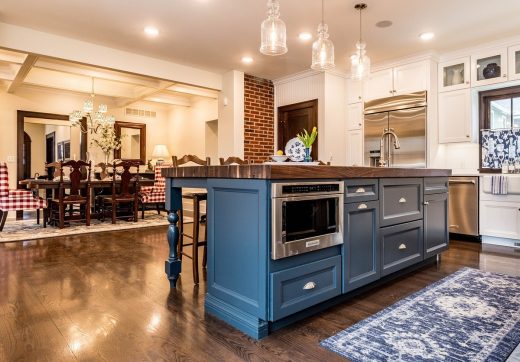
Natural Stone Countertops in Your Kitchen
Home Design
Home Design Articles
Comments / photos for the Designing and planning your perfect kitchen advice page welcome.

